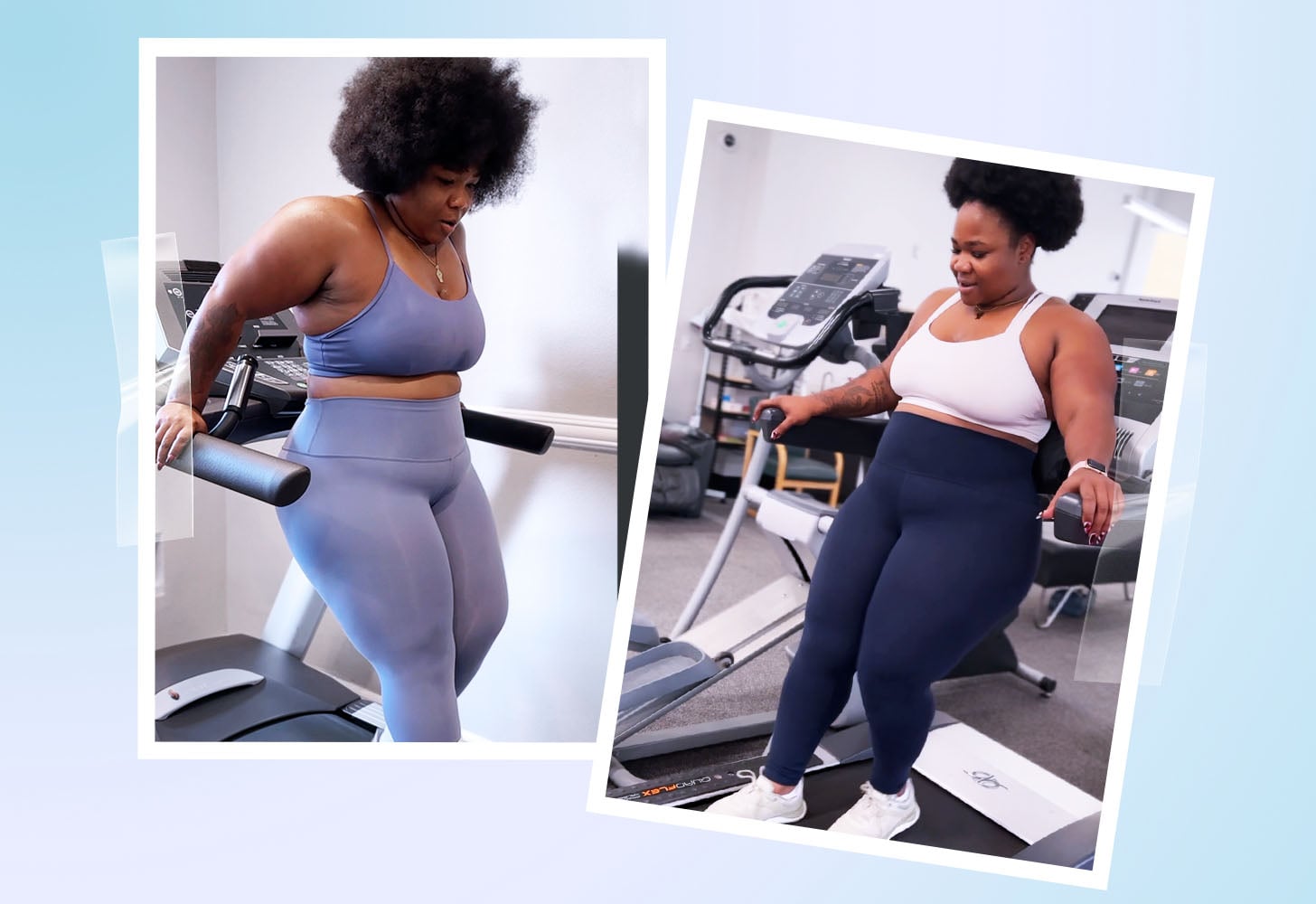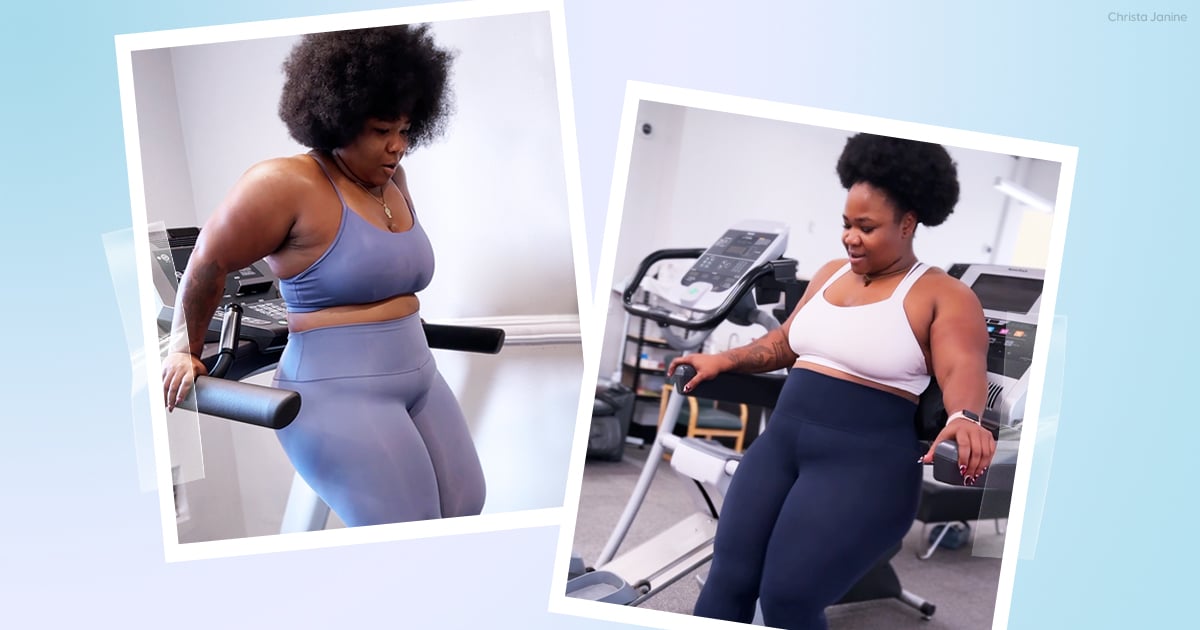
If you’re anything like me, you’re obsessed with finding new ways to move your body and improve your overall quality of life. Roughly a year and a half ago, I began going to physical therapy because I was experiencing knee pain. My therapist would have me walk backward on the treadmill — also known as retro walking or reverse walking — at the end of every session. Fast forward to the present day, two knee surgeries and a social media cycle later, I now see people walking backward on treadmills all over my social feeds.
And it doesn’t just seem like a trendy thing — a lot of influencers share similar experiences to mine. By adding five minutes of backward walking to workouts “I saw a lot of improvement in my knee health, coordination, and overall joint health,” one influencer shared. Another noted improved balance and stability plus an increased range of motion. Ben Patrick, CEO of Athletic Truth Group, even shared on TikTok how walking backward has long been used in Asian cultures to prevent arthritis in the elderly.
It seems incredulous that something as simple as walking backward could have all these benefits — but it’s actually true. Who can benefit, and how can you safely incorporate backward walking into your workout regimen? Here’s everything you need to know.
@christajanine 8 Weeks ago I had #aclreconstruction surgery where my doctor took a tendon from my quad for the graft. I don’t often give myself credit for how hard I work and the amount of pain I push through in order to move forward in life. However, I’m going to take a moment to acknowledge that my progress after 2 months is amazing, and though I still have a journey to get back to my pre-injury range of motion and strength, I’m proud of myself for where I am #trusttheprocess
The Benefits of Backward Walking
Backward walking is a practice used most commonly by physical therapists to improve mobility, strength, and overall range of motion for patients with knee, hip, and ankle injuries.
As mentioned, I was initially introduced to retro walking while in physical therapy for knee issues, including rehab after an ACL reconstruction surgery. My physical therapist assistant, Sara Robertson, says it was part of my plan it’s because backward walking can help improve knee joint range of motion, improve quadriceps function, and help restore normal walking patterns.
I can attest that after only eight weeks post-op from my ACL surgery, my gait and ability to participate in my everyday life activities (driving, coaching soccer, and teaching yoga and group fitness classes) have returned almost completely to normal. Most importantly, after a recent visit with my surgeon, he’s confirmed my knee stability is strong and my range of motion is back within its normal range.
Of course, this is just my personal experience — but science backs up the benefits of backward walking, too. Researchers have found that by switching the direction of your walking patterns from forward to backward, you shift the primary power of movement from your ankles into your hips and knees. This results in a much greater muscle activation in your lower body.
When you walk backward, your foot moves through the motion from toe to heel — the opposite of when you’re walking forward, and your foot rolls from heel to toe. The heel-toe pattern of forward walking creates a greater impact to be absorbed by your knees and lower back; however, when walking backward, the pattern of toe-to-heel allows the impact of your step to be spread over a larger surface area and, in turn, creates a softer impact on your joints, research from the Journal of Physical Therapy Science shows.
Plus, when you move through the motion of toe-to-heel, your quads and anterior tibialis (shin) muscles activate as you straighten your leg. This improves the overall functionality of your quads and focuses on engaging the shin muscle, which isn’t utilized as regularly as the calves. Likewise, as you extend your leg backward, your glutes and hamstrings engage and you lengthen your hip flexor, which helps balance out the work between the muscle groups on the front and back of your body. “Even though backward walking is not practiced in day-to-day life, it is effective in stimulating muscles of the knee joints and quadriceps in a more balanced manner,” researchers wrote in the Journal of Physical Therapy Science paper.
Walking backward also stimulates your brain. As you can imagine, many of us are on autopilot when we walk forward because it’s a natural movement we’ve been practicing from a young age. However, by reversing the direction of our stride, we force our brains to be more conscious of our movement. This intentional redirection has been shown to increase activity specifically in the brain’s sensorimotor cortex, which is responsible for processing information from your senses and allowing your muscles to move in response to stimuli. One study even found that individuals who walked backward (or even just imagined they were walking backward) had better short-term memory recall than individuals who walked forward or sat still.
Because it’s more challenging mentally and physically and thus more taxing on the body, reverse walking burns more calories than forward walking. Walking backward burns roughly 40 percent more calories per minute than walking at a brisk pace moving forward, according to the American College of Sports Medicine. I can attest to this increased challenge in my own workouts; after five minutes of walking backward on a treadmill, my heart is pumping and sweat is already dripping. That simply isn’t the case when I’m moving forward, even if I’m going at a faster pace.
Finally, walking backward is also beneficial in cardiorespiratory training and endurance, Roberson says. Because walking backward is more of a challenge, it requires more oxygen to be consumed in the process. This, like other cardio training, helps improve the health of the body’s heart and lungs, research confirms.
How to Add Backward Walking into Your Workout Routine
There are a variety of safe and productive ways to incorporate backward walking into your training program — just keep in mind that you’ll need to find what works best with your fitness level and overall goals. As a fitness professional and yoga instructor with 10+ years of experience, these are a few suggestions I would give when introducing reverse walking into your programming.
Pick the right treadmill. Find a manual treadmill (the kind with no motor) or one that will allow you to utilize it while it’s off. (There are some treadmills “lock” when turned off and you can’t move the belt unless they’re powered on.) By doing this, you can control the speed of your walk and are less likely to injure yourself. If you don’t have access to a treadmill that will move manually, use the emergency clip and attach it to a piece of your clothing.
Hold on to the rails. When you first start walking backward, you might find that you’re a bit clumsy, and that’s OK. To help you balance, lightly hold onto the handrails, but avoid putting too much weight on your hands.
Start slow. If you’re using a treadmill that’s not manual, start with a 2.0 speed and zero incline. Try doing just five minutes of backward walking at first, and build from there.
Make it a regular part of your routine. To actually see the benefits of backward walking, attempt to do it two to three times a week for at least 5 to 10 minutes. I add it to the end of my workouts right before I ice, but many athletes use it as a warmup to get their workouts started.
Find what works best for you and have fun — and when in doubt, or if you’re dealing with an injury, consult an exercise professional for more personalized guidance.
Image Sources: POPSUGAR Photography / Christa Janine and Photo Illustration: Ava Cruz
